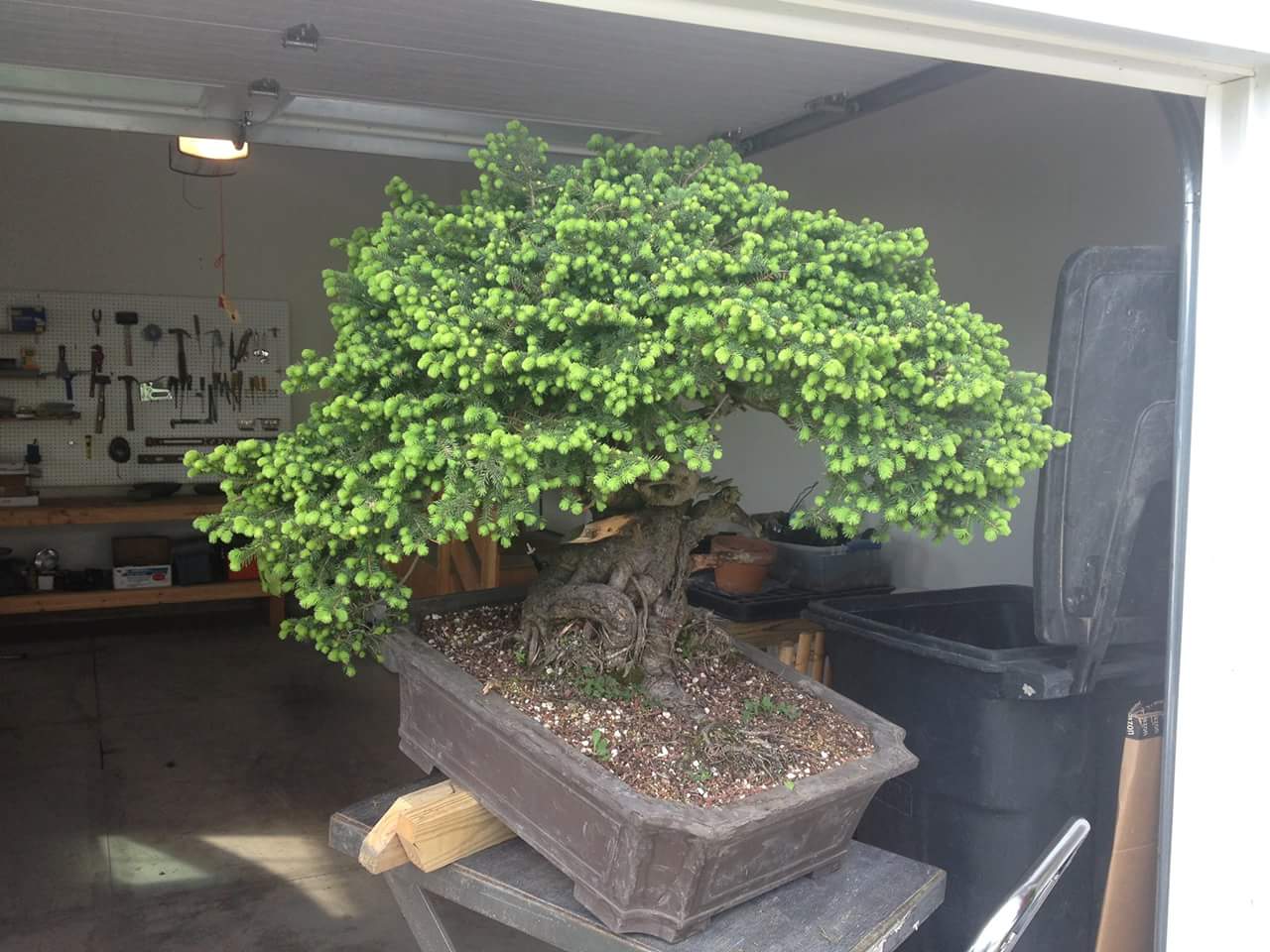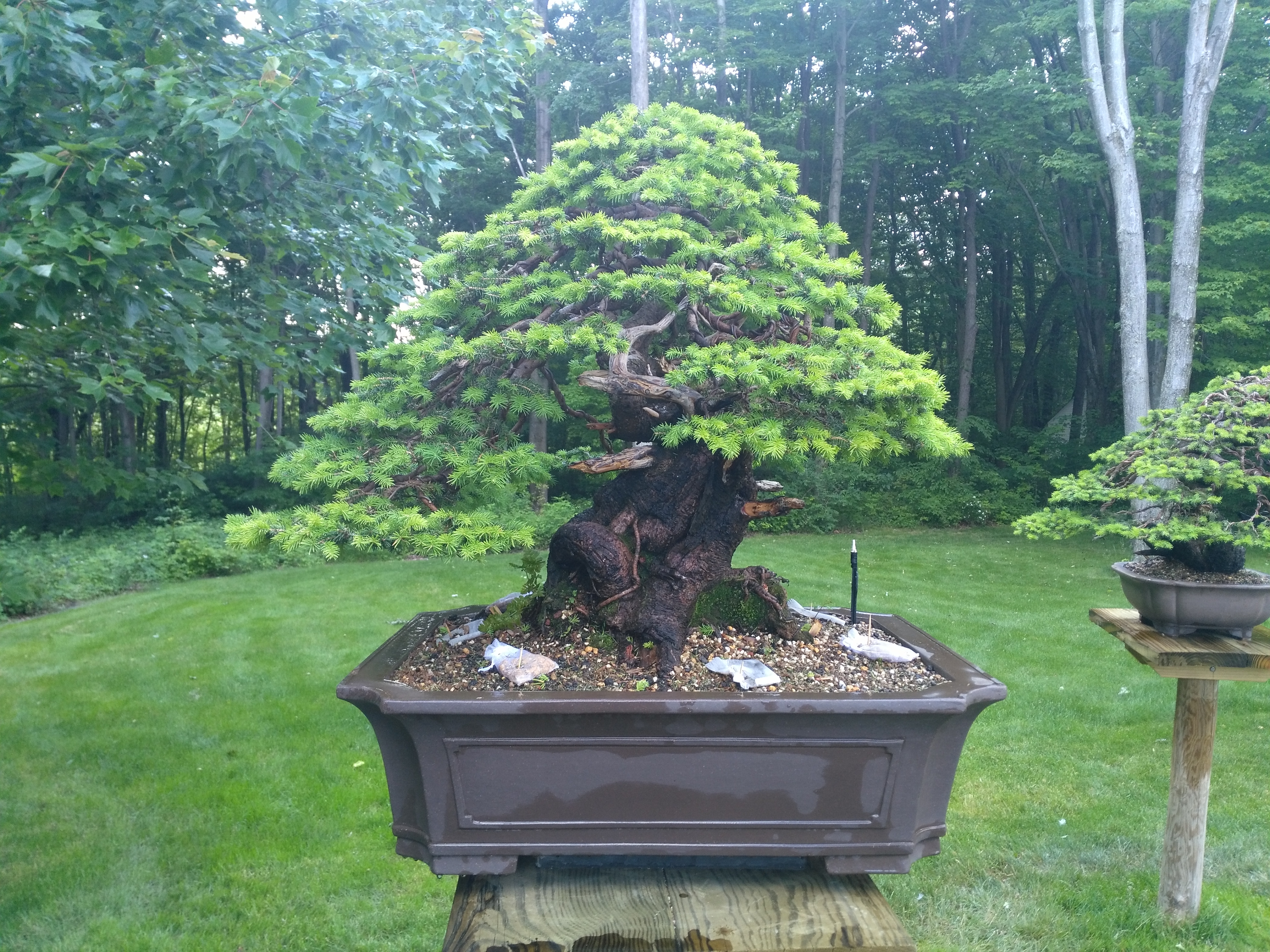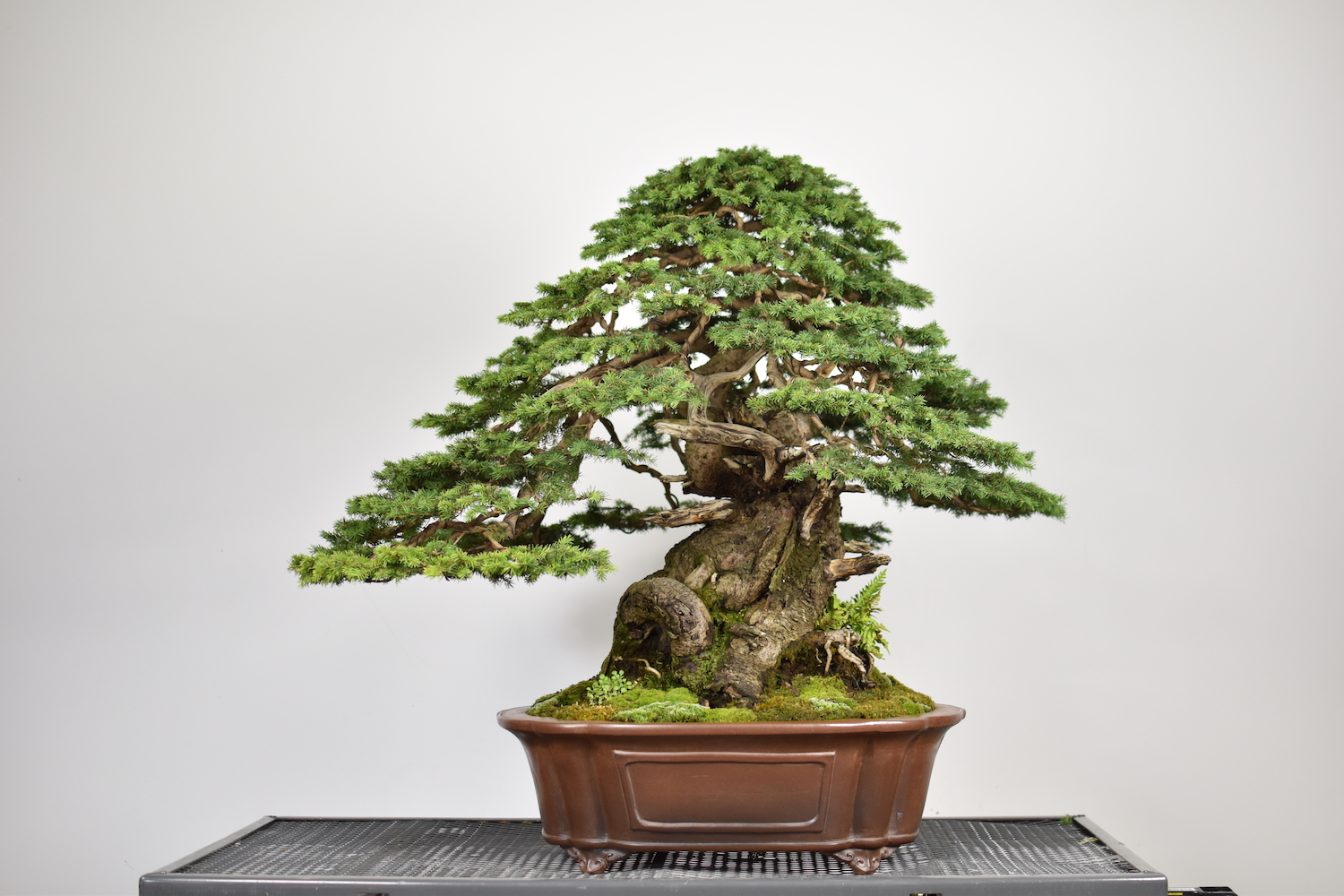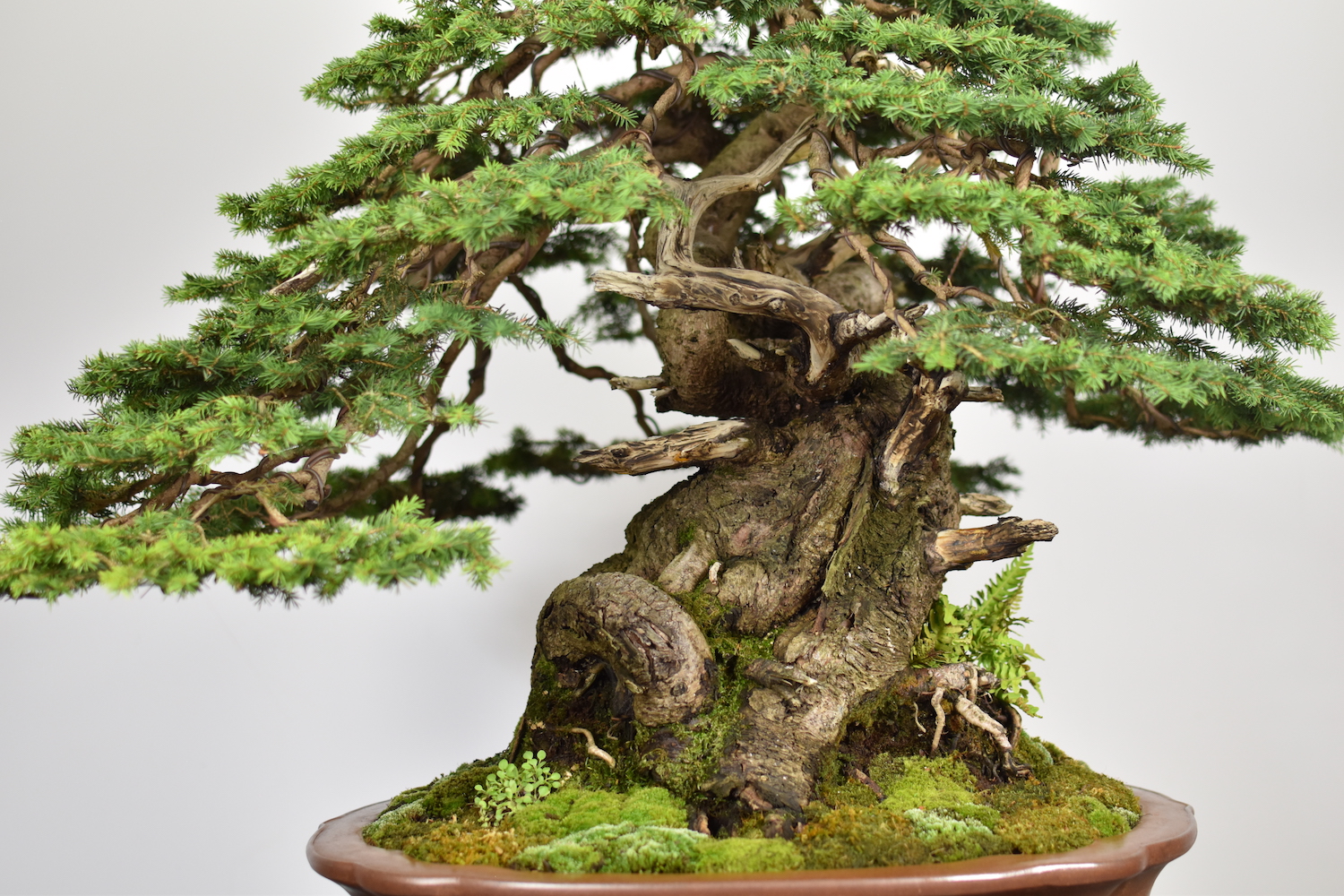Kong - The Bonsai Beast by Bjorn Bjornholm

In 2016, I had the pleasure of working on perhaps the best Bird’s
Nest Spruce bonsai in the world. The
tree had been collected two years prior by its owner, Steve Ohman, from a local
field in Ohio where it had been growing, presumably, for about 40 years. Following collection, it had been heavily
fertilized and allowed to grow unimpeded for 2 full growing seasons, so when I
arrived at Steve’s in June 2016, it was ready to be styled.
There were several elements on this tree that made it such a good candidate for bonsai. First, the immensely powerful base spanned a solid 15 inches in diameter. Second, the trunk tapered to only about 1 inch in diameter near the apex and possessed continuous movement throughout. Third, the branches were all relatively thin and pliable. And fourth, the foliage was terrifically small and compact. Now the only issue was how to go about utilizing and framing these elements to create a top-quality bonsai.
The first priority was to clean the dead foliage away and remove unnecessary branches. The latter of these two steps, though, proved to be quite difficult as a majority of the branches emanated from one location near the apex of the tree. Like a giant puzzle, though, I traced each branch from its origin to its foliage and planned the pad placement step-by-step as I removed superfluous branches.
The tree also required an angle change to expose the best
movement in the primary trunk-line and to bring the apex forward to create a
sense of domineering power. In choosing
the angle, one must always be aware of perpendicular and parallel primary lines
and try to avoid them as much as possible.
Luckily in this case, the tree had beautiful moving lines from bottom to
top, making the process that much easier.
Wiring and shaping took only about 6 hours to complete. This is largely due to the nature of Spruce bonsai in general. Unlike Junipers and Pines, which require relatively large amounts of wire for detail branch placement, Spruce typically already possess pad-like branching and require mostly only primary and secondary branch wiring.
Following initial styling, Steve dubbed the tree ‘Kong’ for, I
think, obvious reasons!
In the subsequent growing season, Kong was again heavily fertilized and allowed to grow unimpeded. The tree was then repotted in Spring 2017 into a beautiful Japanese Gyouzan container, hand-carried back from Japan by Steve himself.

In the fall of 2018, Kong was entered into the US National Bonsai Exhibition in Rochester, NY, holding his own against a number of top trees in the show. It’s rare to take a tree from raw material to exhibition quality in only 2 years, but with Kong it was an easy task thanks to the already existing qualities found within the tree. This is a great thing to keep in mind as you move forward in your bonsai journey - look for material that already has solid potential, whether you are purchasing that material or collecting it from nature yourself. It will make the journey that much more enjoyable!
